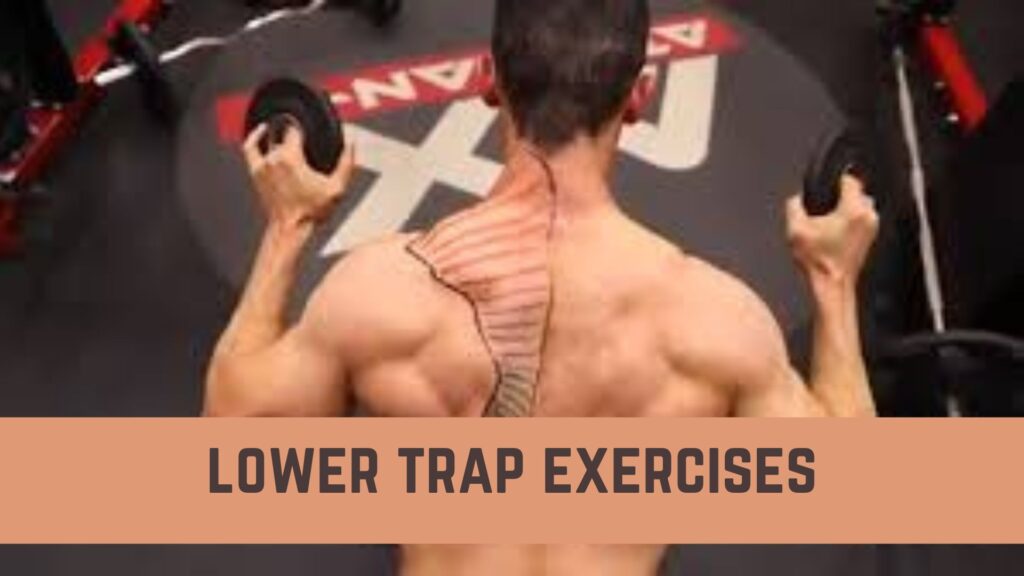If you’re looking to improve your shoulder mobility and stability, strengthening the muscles that support your shoulder is key. One often overlooked muscle group that plays a crucial role in shoulder health is the lower traps. In this blog post, we will explore the importance of lower trap exercises and how they can help you achieve a stronger shoulder.
Understanding the Importance of Lower Trap Strength
The lower trapezius muscles, nestled within the broader landscape of our back, are pivotal in maintaining shoulder health and functional integrity. They extend from the spine and stretch across to the shoulder blades, acting as a linchpin for upper body movement and stability. This muscle group’s strength is not just about lifting heavy weights; it’s fundamental for the nuanced control and movement of the shoulder blades, which is essential for a wide array of daily activities and athletic endeavors.
When the lower traps are strong, they contribute to a balanced muscular environment around the shoulder girdle, ensuring that the shoulders are properly aligned and supported. This alignment is crucial for the prevention of common shoulder issues, such as impingement or rotator cuff injuries, which can arise from overuse or the dominance of stronger muscle groups like the upper traps and deltoids. Moreover, robust lower trap muscles counteract the tendency towards a hunched posture, a common malady in today’s digital age, where many of us spend hours hunched over computers or smartphones.
Incorporating focused lower trap exercises can transform not only your posture but also enhance your body’s resilience against injury, allowing for smoother, more efficient shoulder mechanics. It sets a foundation that is critical not just for athletes or those engaged in physical labor, but for anyone looking to maintain a healthy, active lifestyle free of shoulder discomfort and restriction. Strengthening the lower traps is an investment in your body’s overall well-being, promoting a balance that supports optimal movement and function.
Identifying Signs of Weak Lower Traps
Recognizing the signals of underdeveloped lower trapezius muscles is crucial for anyone looking to enhance their shoulder health. Key indicators of this condition may manifest in a variety of ways that impact both posture and function. Individuals with weak lower traps often find themselves dealing with a pronounced rounding of the shoulders, a physical attribute that not only affects appearance but can significantly hamper the body’s natural mechanics. This forward shoulder position is a red flag for underlying imbalances in the musculature surrounding the shoulder girdle, with the lower traps being a common area of weakness.
Another common symptom is experiencing discomfort or pain in the shoulder area, particularly when engaging in activities that involve lifting or overhead motion. This discomfort can be a direct consequence of the lower traps’ inability to adequately support and stabilize the shoulder blades, leading to increased strain on other parts of the shoulder complex.
Difficulty with overhead movements is a further indication that the lower traps may not be performing optimally. When these muscles lack strength, lifting the arms above the head can become challenging, as the lower traps play a pivotal role in facilitating this range of motion by stabilizing and rotating the shoulder blades.
Acknowledging these signs is the first step towards addressing weak lower traps. Taking action by incorporating targeted exercises into one’s fitness regime can pave the way for improved shoulder function, reduced discomfort, and a more balanced muscular system.
Preparing Your Body for Lower Trap Exercises
Embarking on a regimen that includes lower trap exercises requires initial steps to ensure your body is primed and ready. A comprehensive warm-up is essential, focusing on elevating the body’s core temperature and increasing blood circulation to the muscles that will be engaged. This can be achieved through light aerobic activity, such as a brisk five-minute walk or a quick session on a stationary bike. Following this, mobility exercises targeted at the shoulder girdle and thoracic spine are highly recommended. These movements help to enhance the flexibility and range of motion necessary for executing lower trap exercises with the correct form.
Incorporating dynamic stretches that mimic the exercises you plan to perform can be particularly effective. For instance, arm circles and shoulder shrugs gently prepare the traps and surrounding muscles. Additionally, paying attention to the scapular region through activations and stretches ensures that the shoulder blades, which play a significant role in lower trap exercises, are ready to move smoothly and efficiently.
Proper preparation goes beyond physical readiness, encompassing mental focus and understanding the importance of correct technique. Ensuring that you approach your workout with a clear mind and a focus on the muscles you will be engaging can significantly enhance the effectiveness of your session. By dedicating time to adequately prepare both mind and body, you set the stage for a successful workout that maximizes the strengthening potential of your lower traps while minimizing the risk of injury.
Lower Trap Exercises to Enhance Shoulder Stability
To effectively bolster shoulder stability, integrating targeted lower trap exercises into your fitness regimen is pivotal. Among the most beneficial movements for engaging and strengthening the lower trapezius muscles are scapular wall slides, face pulls, and the prone Y exercise.
Scapular wall slides are designed to promote scapular mobility and strengthen the lower traps by encouraging the proper movement of the shoulder blades up and down the back. This exercise, performed against a wall, ensures engagement of the lower traps while maintaining a neutral spine, which is essential for shoulder stability.
Face pulls, another powerful exercise, focus on retracting the scapula and engaging the posterior shoulder muscles, including the lower traps. By using a resistance band or cable machine, this exercise helps to correct rounded shoulders and improves posture by strengthening the muscles responsible for pulling the shoulder blades together.
The prone Y exercise is particularly effective in isolating the lower traps. Performed lying face down on a bench or the floor, extending the arms into a Y shape overhead activates the lower traps, enhancing their strength and functionality. This movement not only targets the lower traps but also involves the entire shoulder girdle, promoting overall shoulder health and stability.
Incorporating these exercises into your workout routine will specifically target the lower traps, a key component in achieving a stable and strong shoulder. Regular practice of these exercises, with a focus on technique and gradual progression, will contribute significantly to the health and function of your shoulders, supporting a wide range of activities and helping prevent injury.
Incorporating Lower Trap Exercises into Your Workout Routine
Integrating lower trap exercises into your fitness regimen is essential for building a robust shoulder support system. Aim to weave these exercises into your routine two to three times a week, ensuring that each session prioritizes precision in movement and posture. Starting with a manageable number of sets and repetitions, focus on mastering the technique before progressing. It’s crucial to listen to your body and adjust the volume and intensity of your workouts accordingly. As your strength and proficiency in performing these exercises increase, challenge yourself by gradually adding more repetitions or increasing the resistance, whether through heavier weights or tighter resistance bands.
To maximize the benefits of lower trap exercises, consider alternating them with other workouts targeting different muscle groups. This approach allows for balanced muscle development and prevents overworking any single muscle group, reducing the risk of injury. Moreover, incorporating a variety of exercises keeps your fitness routine engaging and dynamic, which can enhance motivation and adherence over time.
Must Read: Harnessing Somatic Exercises for Weight Loss and Improved Mood
Remember, consistency is key. Regular engagement with lower trap exercises will not only fortify your shoulders but also contribute to better posture and reduced risk of shoulder injuries. Tailoring the routine to fit your individual needs and fitness level will help ensure sustainable progress and long-term shoulder health.
Monitoring Your Progress and Adjusting as Needed
Keeping a close eye on your development is crucial as you incorporate lower trap exercises into your regimen. This includes noting improvements in strength, flexibility, and any changes in shoulder stability or posture. To ensure you’re on the right track, consider keeping a workout journal where you can log exercises, repetitions, and any sensations or difficulties experienced during your sessions. This record-keeping will allow you to identify patterns, successes, and areas needing further attention.
As your proficiency with lower trap exercises increases, it may become necessary to adjust the difficulty to continue challenging your muscles. This could involve modifying the exercises to add complexity, increasing the weight used, or adjusting the number of repetitions and sets to better meet your current fitness level. Additionally, incorporating new exercises that target the lower traps from different angles can introduce fresh challenges and stimulate further muscle development.
An essential part of this process is also recognizing when to scale back. If you encounter discomfort beyond typical muscle fatigue, reassess your exercise form, volume, or intensity. Making informed adjustments based on your body’s feedback is key to avoiding injury and promoting sustained progress.
Periodic reassessment of your goals and the effectiveness of your routine can guide these adjustments. By maintaining a responsive approach to your lower trap exercises, you can optimize shoulder health and function, ensuring continued improvement and adaptation over time.



